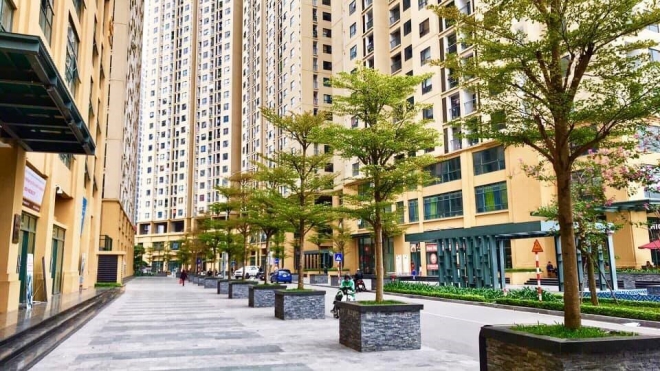
During the third quarter, about 4,330 new serviced apartments were offered on the Hanoi market, decreasing 8 per cent quarter on quarter (QoQ) after the closure of two projects and the entry of one. Grade A had the strongest take-up while Grade B and C suffered decreases in leased units, said Do Thu Hang, Director of the Research and Consultancy Department at Savills Vietnam’s branch in Hanoi.
Grade A apartments must be built near convenient transportation systems, with good facilities and convenient social and service infrastructure. They also need a professional management and operation company.
“Despite providing the largest supply source, Grade A demand retained strong, especially powered by robust FDI inflows,” said Hoang Dieu Trang, Savills Vietnam’s Senior Manager on Commercial Leasing.
Average market-wide rent increased 4 per cent QoQ and occupancy remained high at 84 per cent. Within the Grade A segment, branded operators charged 19 per cent more for rent than non-branded counterparts, Hang said at a recent press conference on releasing the third quarter report on Hanoi property market.
Meanwhile, in the third quarter, 11 new and the next phases of nine projects of apartments for sale provided approximately 8,100 units, up 23 per cent QoQ and 17 per cent year-on-year. Grade B remained the largest supplier, accounting for 67 per cent of the market share, said Hang.
Hang said sales were down 1 per cent QoQ but up 50 per cent year-on-year due to high supply from Vingroup over the past year. Eastern districts had the highest sales in the quarter with a 40 per cent share.
Meanwhile, the HCM City market was more attractive than Hanoi in terms of selling price, rent, rate of return and profit margin, Nguyen Ngoc Hieu, Head of Market Research Department of Batdongsan.com.vn, said at an event in Hanoi on Tuesday to release its third quarter report on Hanoi and HCM City property markets.
"Because Hanoi's economy is developing well but HCM City is known as a leading city in economic development, most foreign companies in Vietnam choose HCM City for their representative offices," Hieu said.
This city has more diversification in real estate products than Hanoi, he said. Besides that, it has attracted many workers and foreign experts so strong growth in population has made demand for accommodation and investment in HCM City's property market much higher than in Hanoi in all segments.
Hieu also said that demand for accommodation and investment in HCM City is always higher than Hanoi. Many investors from Hanoi have chosen HCM City to put their capital.
Batdongsan.com.vn’s data about the asking prices of apartments between Vietnam’s two biggest real estate markets shows that in the third quarter, the average asking price of apartment in HCM City was 25 per cent higher than Hanoi's. The gap reached nearly 40 per cent for apartments in the central areas of these cities.
Not only in the apartment segment, the average growth rate of house and townhouse prices in HCM City was also higher than in Hanoi. The price of houses in Hanoi was up about 10 per cent, while it was up to 26 per cent in HCM City.
Townhouses in the southern city also saw an average price increase of 12.6 per cent, compared to 7.6 per cent in Hanoi.
In addition, during the third quarter, Savills Vietnam saw the market share of studios and one-bedroom units rocket from 16 per cent in 1996 to 46 per cent in the third quarter this year, Hang said.
Tenants are not only expatriates and corporate executives with long-term leases but individual business/MICE/leisure travelers with requests for short-term stays, she said. Working with dynamic online travel agents, more than 90 per cent of serviced apartment operators now meet monthly and daily requests instead of only annual contracts.
Beside traditional Japanese and Korean tenants, other Asian expatriates from Hong Kong, Singapore and China are expected to escalate demand.

















